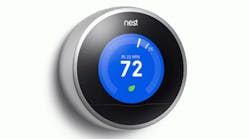Latest from Technology
Details, Data, and Communications
Sponsored
In-home displays and smart thermostats to enjoy highest installation numbers, but don’t deliver on revenue
LONDON, UK — According to a recently published IHS report (Smart Home Energy Management Devices Report – 2015) analyzing the market for demand-response enabled smart home energy management devices, in-home displays and smart thermostats will lead the way in terms of installed base numbers but will generate less revenue than smart appliances – a combined US$57 million compared to nearly US$3 billion – due to government and utility company subsidies.
The report analyzes the market potential for smart home energy management devices which connect to a smart meter in over 20 individual countries and regions, providing forecasts by country, device type and connectivity protocol.
The forces driving consumer adoption of these devices differ from region to region, with several key factors determining whether or not the market will flourish, such as the country’s energy profile, condition of electricity infrastructure, government policies on energy efficiency and technology investment, and citizen engagement with both energy efficiency and smart home technology.
Of device types, in-home displays (IHDs) are projected to have the highest installed base and unit shipments from 2011 to 2025, followed by smart thermostats which are predicted to have an installed base of 21.4 million by the end of 2025. However, revenues for both IHDs and demand response-enabled smart thermostats are relatively low, as these devices are often subsidized by the government or utility companies.
Smart appliances – such as washing machines and refrigerators - are projected to have the highest revenues by the end of the forecast period, growing from US$600,000 in 2014 to approximately US$3 billion in 2025, due to their higher unit price.
IHS Technology has covered the smart home market since 2010, and regularly analyzes all aspects of the market. The Smart Home Energy Management Devices Report – 2015 provides in-depth analysis across three world regions: the Americas, EMEA, and Asia. Unit installed base, shipment and revenue figures are estimated for 2011 to 2014 and forecast through 2018, as well as long-term regional forecasts for 2020 and 2025. The market is segmented by region, country, product type, and connectivity. Additionally, IHS analyzes the market for all Smart Home Automation Devices in its Smart Home Intelligence Service.


